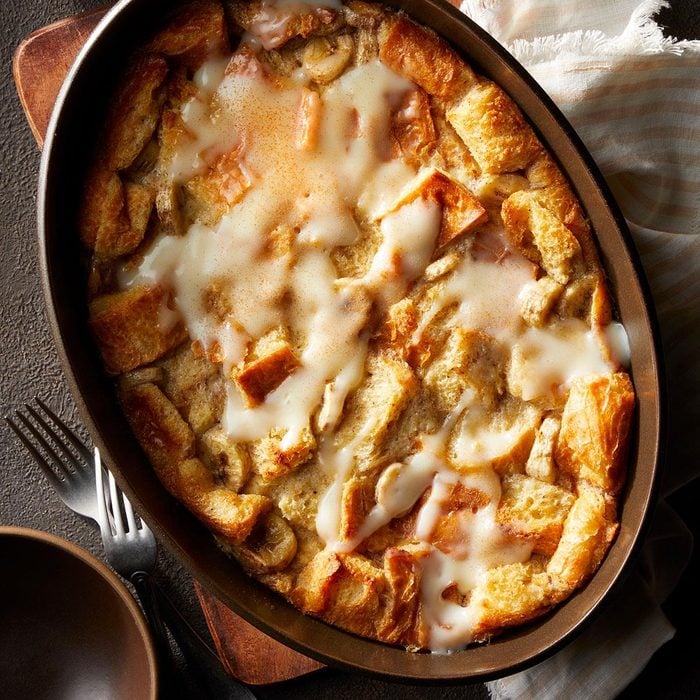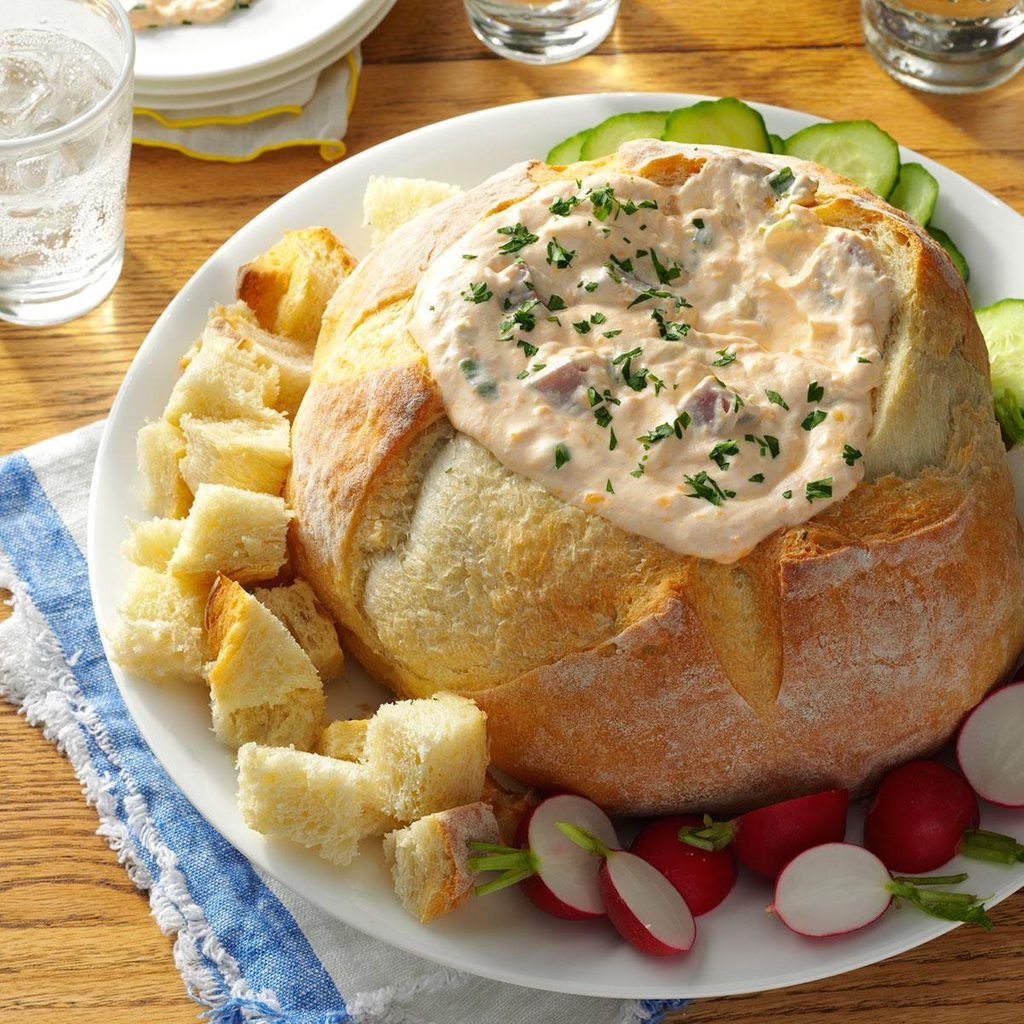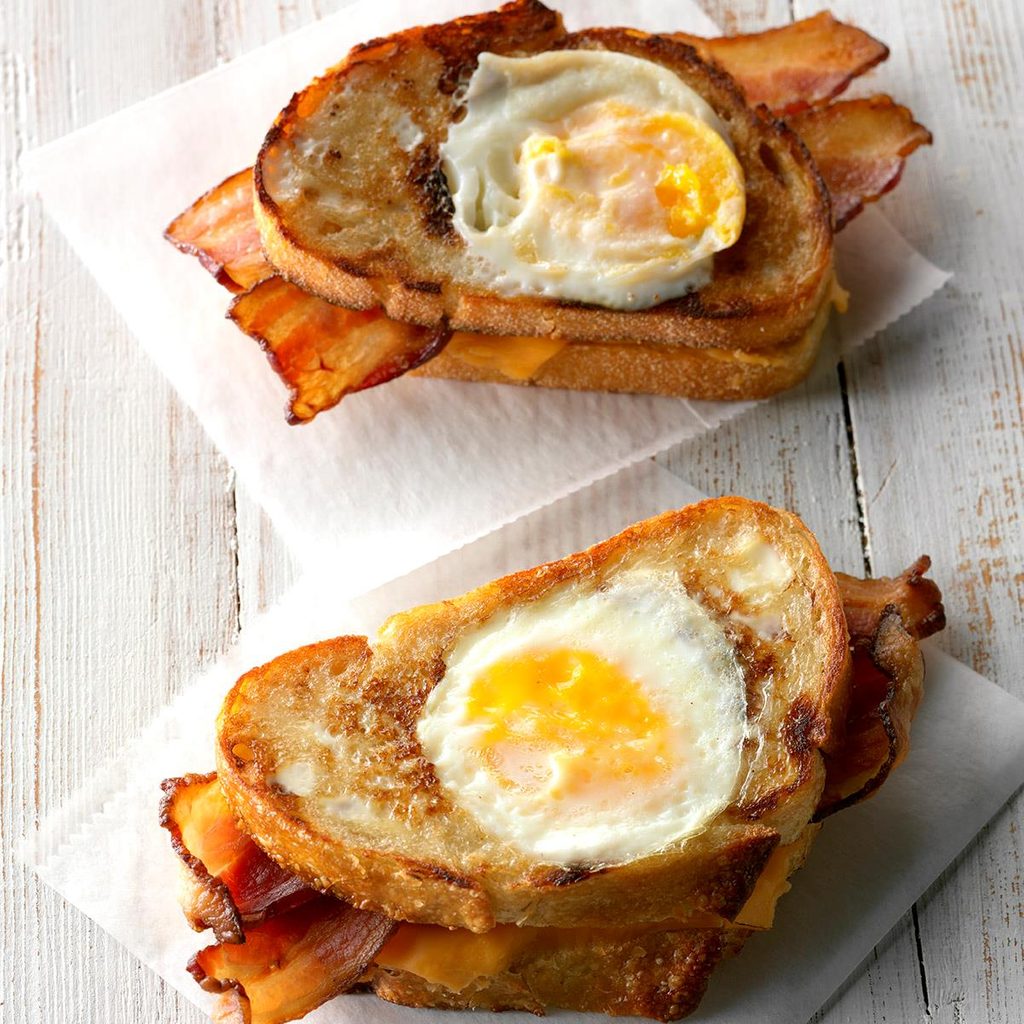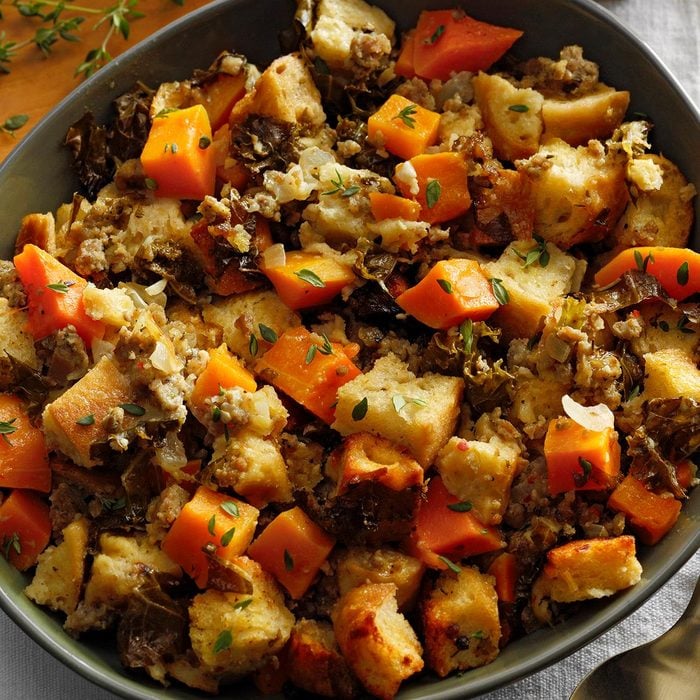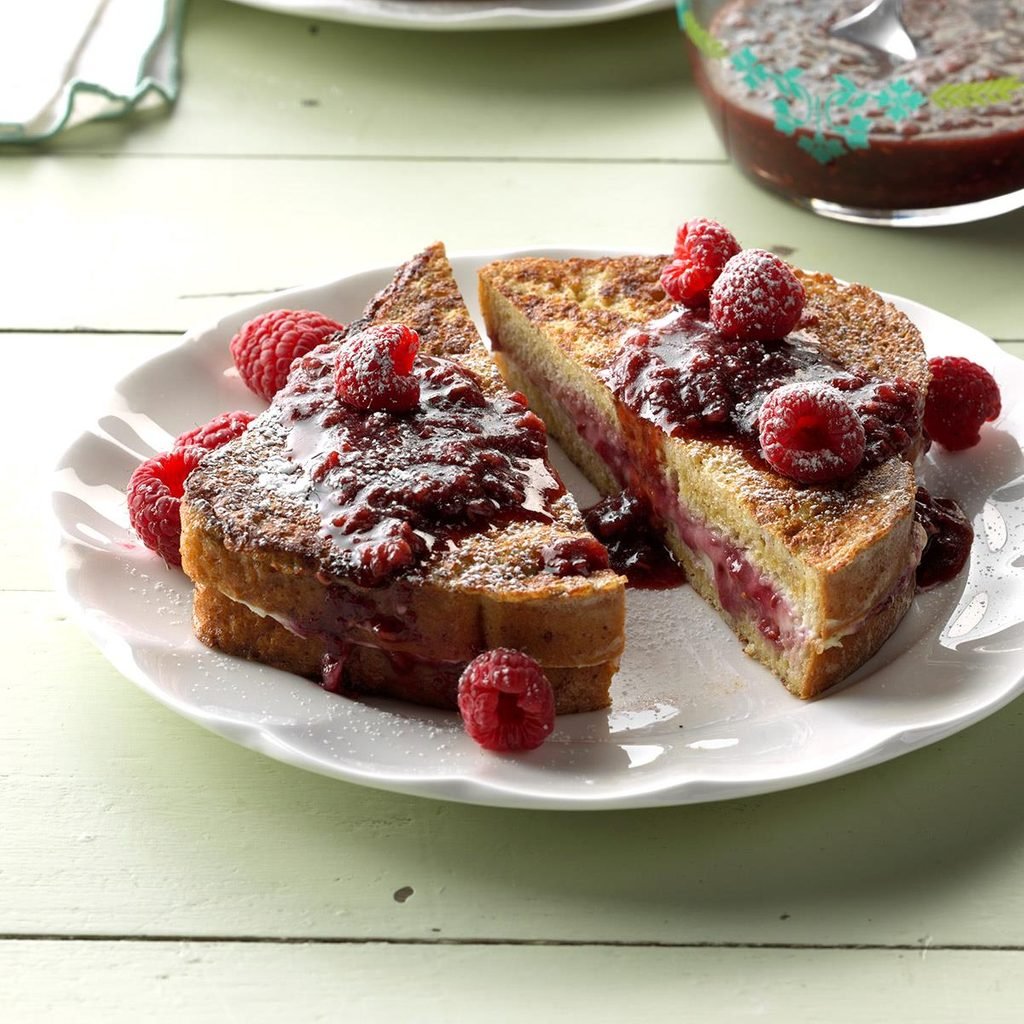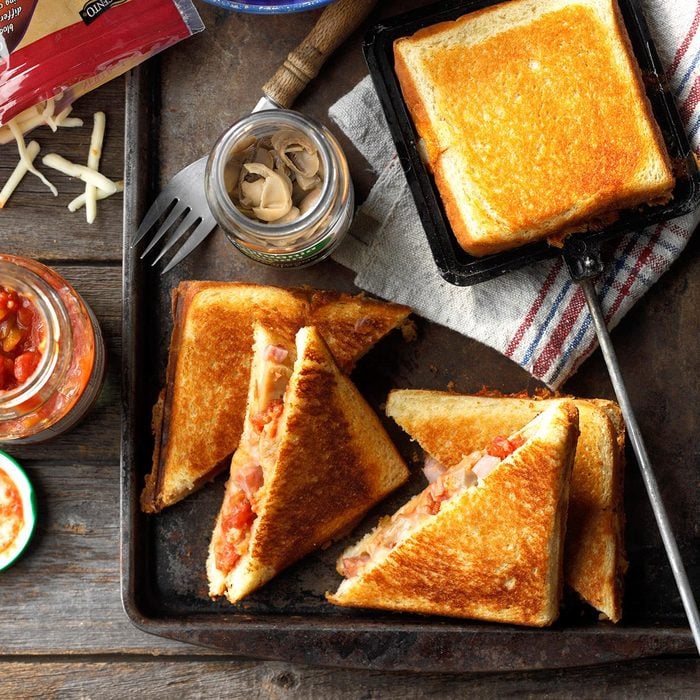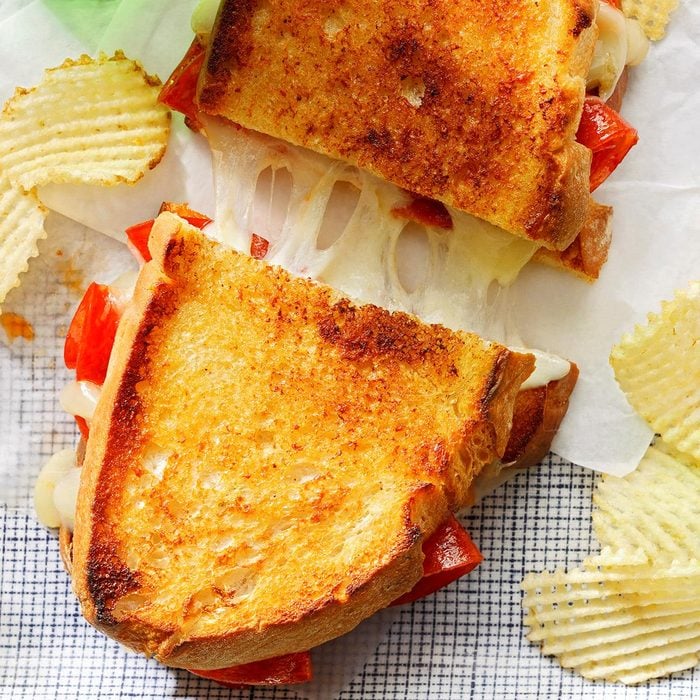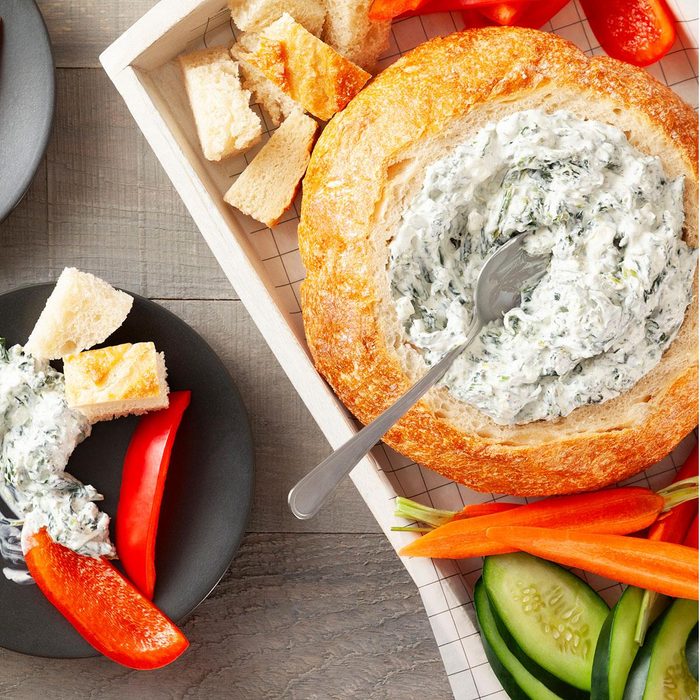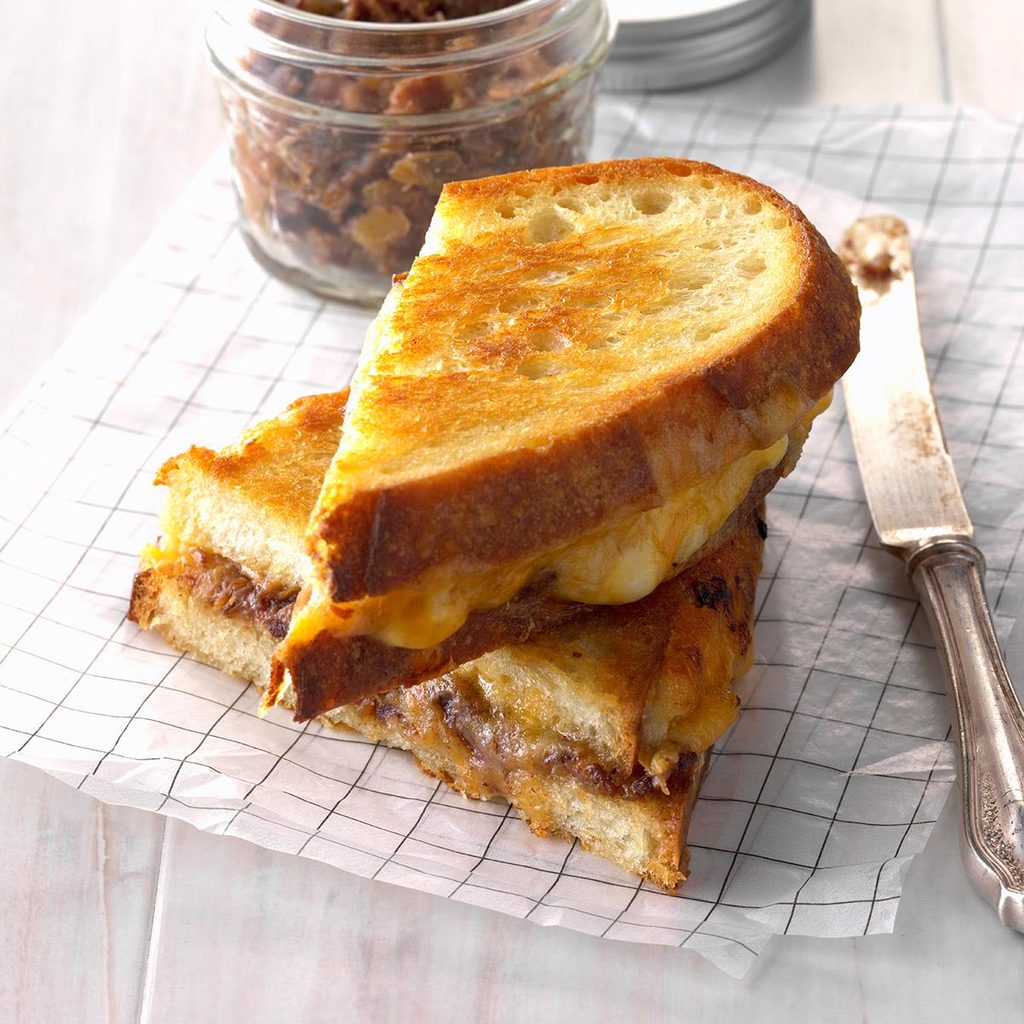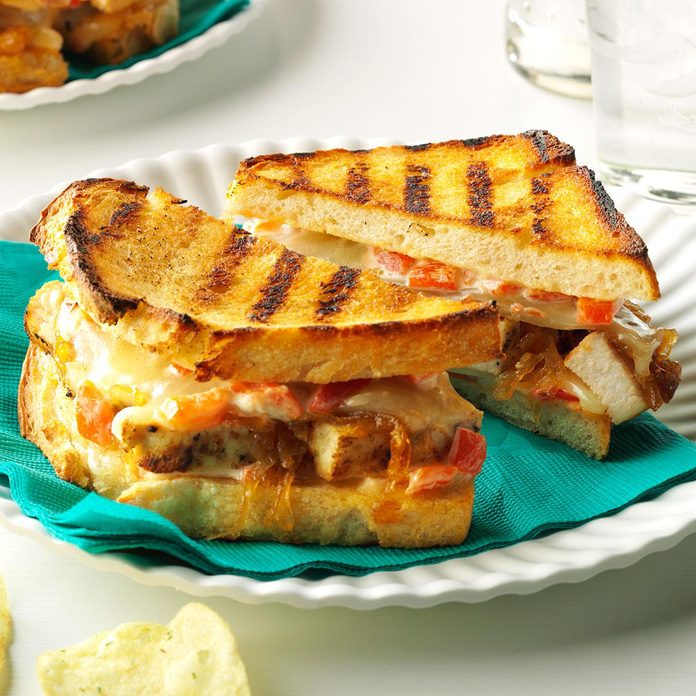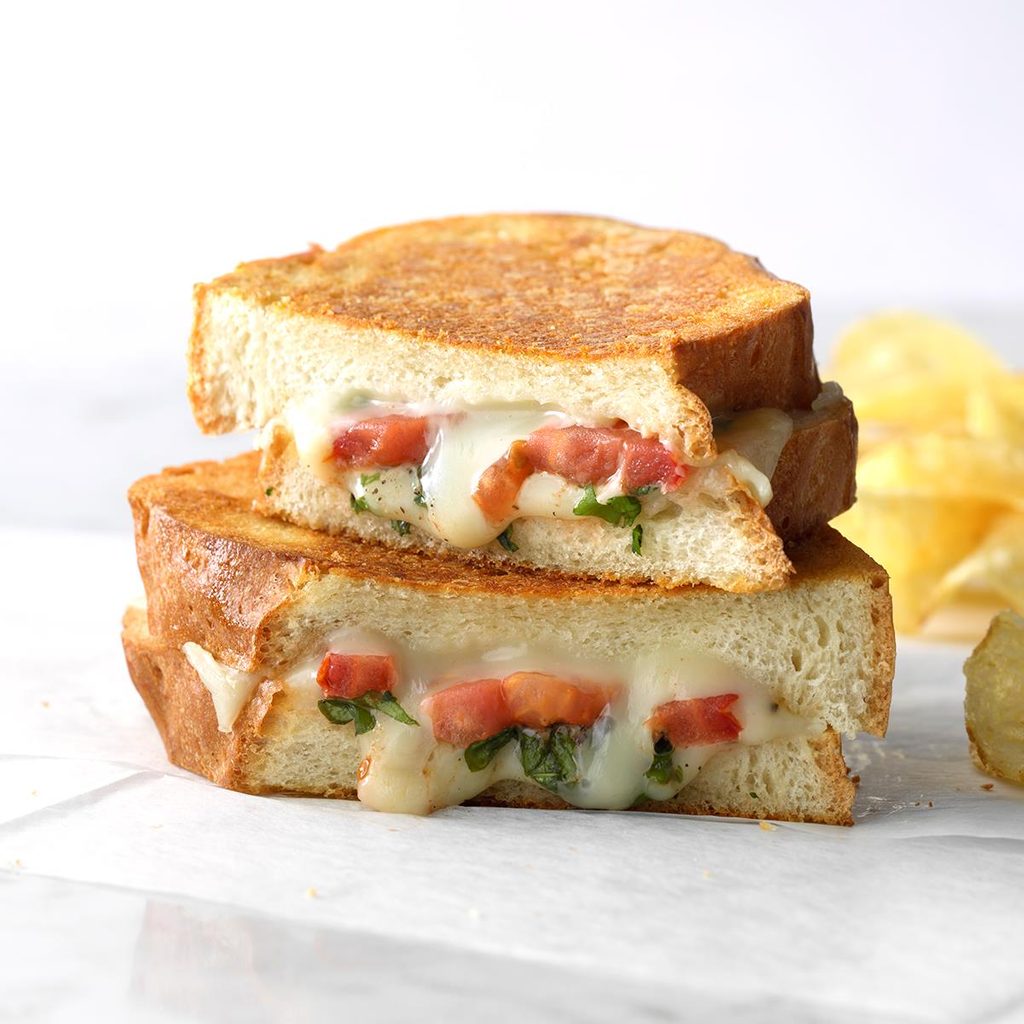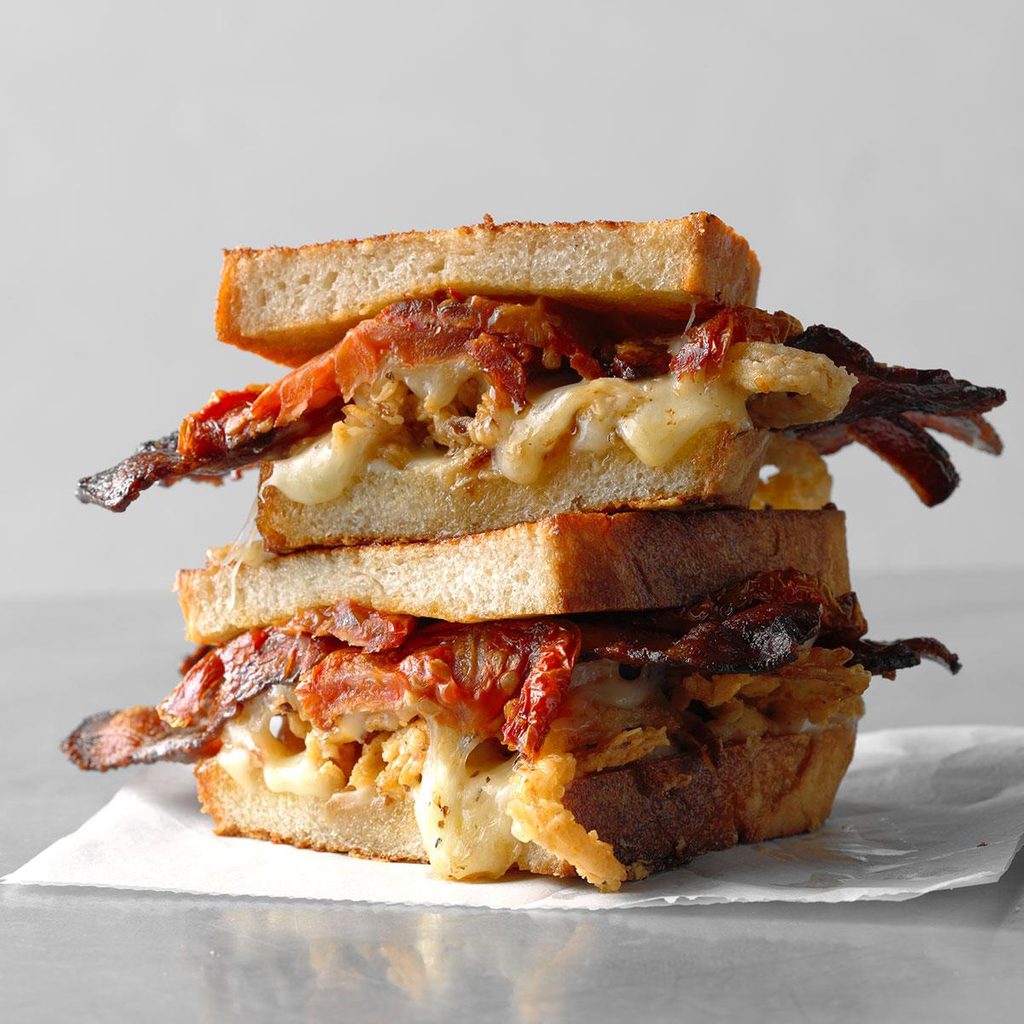Getting into baking your own homemade bread? It’s only a matter of time before you graduate from beginner bread recipes to the more advanced bakes. Before you know it, you’ll be dabbling in the world of sourdough. Sourdough bread is a bit different than most yeasted breads because it starts with, well, a starter. Sourdough starter is fermented and contains natural yeast which gives it its signature tang.
Ready to dive into the world of sourdough? You can follow our Associate Culinary Producer Audrey Rompon’s sourdough journey. We’ve also got answers to your most burning sourdough questions from Audrey and Senior Food Stylist Josh Rink.
What is sourdough starter exactly?
Sourdough starter is natural or “wild yeast” and bacteria that’s grown over time with the help of water, flour and fermentation. If you’re relying on natural yeast for your starter, it can take some time for it to develop. You can jump-start your starter with packaged yeast.
This mix of yeast, flour and water that’s been fermented gives sourdough bread its rise and flavor.
How do you store sourdough starter?
“Sourdough starter should be stored at room temperature—ideally around 70 degrees,” according to Josh. Be sure to keep the starter out of direct sunlight.
Be sure to choose the right container for storing your starter. You’ll want the container to be about four times the size of the starter so it has room to grow. A large Mason jar is a great vessel for keeping your starter. Just be sure not to seal it (or any container you use) too tightly. You want to allow gasses to escape from the container so it doesn’t explode!
Once you have an established starter, you can stash it in the fridge.
How can you tell if your starter is alive?
Sourdough starter can take some time to develop—up to two weeks. Once its established itself, you need to “feed” the starter to keep it happy, according to Josh. Feeding means adding a bit more flour and water.
After feeding your starter, it should get bubbly and increase in volume over the course of a few hours. This is evidence that the yeast is consuming nutrients and releasing gas. “Bubbles are the sign that the starter is alive and thriving!” Josh says.
Just be aware that after eating, the starter will deflate again. This boom and bust is part of the cycle of sourdough starter.
How often should you feed sourdough starter?
When storing a starter at room temperature, Josh recommends daily feedings.
If you store it in the fridge, Audrey suggests letting it come to room temperature once a week and feeding it then. Fridge storage is best if you want to keep your starter going long-term.
Can you overfeed sourdough starter?
Yes, you can overfeed your sourdough starter. Audrey explains: “Every time you add more flour and water, you are depleting the existing population of natural bacteria and yeast.” If you keep adding more and more, eventually you’ll dilute the starter so much that you’ll just have flour and water.
How long until you can use the starter?
There’s no precise answer to this question, unfortunately, according to Josh. “Environment and ingredients play a role in the fermentation process,” he says. So your starter may be ready in just five days or up to two weeks.
The best way to tell if your starter is ready to use is by placing a spoonful in a bowl of water. If the dollop floats, it is ready to use.
Want to bake? Josh recommends baking with the starter a few hours after feeding. “When the starter has bubbled up dramatically and is near its peak volume,” he says is the right time.
Why do you discard half of the sourdough starter?
This might seem like the most heartbreaking part of making sourdough bread: discarding part of your starter. But Josh assures us that there’s a reason for this.
“Imagine the wild yeast and bacteria in the starter to be like little Pac-Man creatures. After feeding, these creatures consume all the available nutrients and reproduce. When the nutrients are gone the bacteria and yeast stop releasing gas, reproducing, and begin to die back. Removing a portion of the starter keeps the volume of the starter to a manageable size. Additionally, keeping the remaining portion of the starter is important to retain the yeast and bacteria that have taken so long to develop and grow.”
What can you do with the discard?
Here’s the secret: You don’t have to discard the discard. That can be the foundation for more starter.
If you’re not interested in keeping the starter going, you can make an additional loaf of bread, pizza crust, waffles, pancakes, cinnamon rolls and other sourdough discard recipes. Anything that requires yeast is a great application for a starter.
Can you use whole wheat flour to make sourdough bread?
You sure can! You can use lots of flours to make sourdough. Josh recommends a mix of bread flour and whole wheat flour for a really lovely and rustic loaf.
While there are lots of questions to ask about sourdough, it’s really not as challenging as you might think. Just follow the advice from our Test Kitchen and you should be ready to make your own! And once you do, share your creations with our baking community, Bakeable.
Use Your Sourdough Bread in These Recipes
Open-Faced Prosciutto and Egg SandwichWe love breakfast at any time of the day in my house. I came up with this healthy egg sandwich as something new for brinner (aka breakfast for dinner), but they’re fabulous no matter when you serve them. —Casey Galloway, Columbia, Missouri
Banana Bread PuddingWarm and indulgent, this banana bread pudding makes a wonderful main dish for a weekend brunch or a family breakfast.
Creamy Sourdough SnackThis bread bowl dip was a big hit at my mom's 50th birthday party! —Darelyn Payes, Hayward, California
Toad in the Hole Bacon SandwichSwitch up the cheese—pepper jack gives a nice kick—or use sliced kielbasa, ham or sausage in place of the bacon in this versatile grilled cheese sandwich. —Kallee Krong-McCreery, Escondido, California
Sausage, Kale and Squash Bread PuddingWho said bread pudding has to be for dessert? I love to serve this for brunch or dinner when I want something hearty and a little unusual. —Lauren Knoelke, Milwaukee, Wisconsin
Berry-Stuffed French ToastBoth kids and grown-ups will enjoy the creamy filling and sweet syrup that flavor these French toast sandwiches. Vary the recipe by substituting fresh blueberries and strawberries and the corresponding jam. —Monica & Lisa Hannahan, Dayton, Ohio
Ham & Jack Pudgy PiePepper jack cheese adds spicy flavor to these warm, melty sandwiches. —Terri McKitrick, Delafield, Wisconsin
Grilled Cheese and Pepperoni SandwichWho doesn't love a good grilled cheese sandwich recipe? This super decadent version comes fully loaded with pepperoni and five types of cheese!—Josh Rink,
Taste Recipes Food Stylist
Mint-Cucumber Tomato SandwichesI jazzed up the quintessential teatime cucumber sandwich to suit my family's tastes. This was my absolute go-to sandwich last summer when I was pregnant. It hit all the right spots! —Namrata Telugu, Terre Haute, Indiana
Try these
Tomato sandwiches, which are enjoyed throughout summer.
Turkey MeltFor those days when you're rushing from work to home to evening activity, this turkey melt sandwich with green chiles is about to become your standby.
Chili Baked BrieChili and garlic powder shine in this cheesy loaf that’s best right out of the oven. It’s always a favorite when I entertain. —Mary Spencer, Greendale, Wisconsin
Badger State StuffingYour family will love the contrasting sweet, savory and slightly tart flavors in this spin on a Thanksgiving classic. Feel free to use your favorite beer or dried fruit to make the dish your own. —Andrea Fetting, Franklin, Wisconsin
Bacon Grilled CheeseLevel up your grilled cheese with this bacon grilled cheese sandwich. Featuring mustard, mayo, tomato, onion and two cheeses, this sandwich is anything but boring. Serve it with tomato soup and salad for a complete meal.
Spinach Dip in a Bread BowlWhen we get together with friends, I like to prepare this creamy spinach dip. It's a real crowd pleaser. —Janelle Lee, Appleton, Wisconsin
Grilled Pesto, Ham and Provolone SandwichesThese Italian-style sandwiches are loaded with zesty flavors. To lighten them a little, use fat-free mayo. We serve them with minestrone or a crisp salad. —Priscilla Yee, Concord, California
Chicken Florentine PaniniChicken Florentine Panini, from Lee Bremson of Kansas City, Missouri, brings an Italian flair to this speedy meal. The grilled sandwich combines chicken with provolone cheese, spinach and red onion.
Party Cheese BreadYou can't go wrong with this cheese bread recipe. The cheesy, butter bread is so simple to make but the taste is sinful. Plus it looks fantastic, and people just flock to it! It's better than the usual garlic bread with pasta, too. —Karen Grant, Tulare, California
Blue Cheese Chicken Salad SandwichesI'm a big fan of blue cheese dressing, so I decided to go the "no mayo" route and replace it in this chicken salad. So tangy! Serve the chicken mixture on a bed of lettuce if you're in the mood for salad instead. —Giovanna Kranenberg, Cambridge, Minnesota
Bacon, Egg & Avocado SandwichesMy husband wanted bacon and eggs; I wanted a BLT. We settled our standoff with an irresistible sandwich we've had many times since. —Patti Darwin, Lubbock, Texas
Baked Crab DipWe enjoyed this exquisite dip at my grandson's wedding reception. It looks fancy but is easy to make. You can even make this crab dip recipe ahead of time by filling the bread bowl early in the day and chilling it until serving. Just remove it from the refrigerator 30 minutes before baking. —Marie Shelley, Exeter, Missouri
Gourmet Grilled Cheese with Date-Bacon JamThis sandwich doubles up on melty cheese, but the star of the show is the sweet and salty date-bacon jam. It makes for a truly grown-up version of grilled cheese. —Kathy Cooper, Tucson, Arizona
Grilled Cheese, Ham and Apple SandwichIn this stepped-up version of a ham and cheese sandwich, melty cheeses, crispy apples and smoky ham are the ultimate combination. —Josh Rink,
Taste Recipes Food Stylist
Brussels Sprouts au GratinBrussels sprouts au gratin is topped with creamy sauce, Swiss cheese and bread crumbs. Serve this dish at your next dinner party, and prepare for your Brussels sprouts to be sought after.
Chicken PaniniThis melty, decadent and easy-to-make chicken panini is perfect for a quick lunch or a casual weekend treat.
Chicken & Caramelized Onion Grilled CheeseMy grilled cheese sandwich combines chicken with sweet caramelized onions, red peppers, Swiss cheese and sourdough bread. It’s oh-my goodness. —Kadija Bridgewater, Boca Raton, Florida
Mighty Hero SandwichMy friend Valerie is a gracious hostess. Of all the dishes she's shared over the years, this hero sandwich stands out. It’s easy and colorful, and the marinated veggies give it all kinds of oomph. —Kelley Boyce, Tulsa, Oklahoma
Basil-Tomato Grilled CheeseThe tastes of summer abound in this easy Italian-style grilled cheese sandwich. Not only is it delicious, it's super-fast, so you can get back to those summer outdoor activities. —Sylvia Schmitt, Sun City, Arizona
Chicken Spinach Dip Bread BowlsMy family loves artichoke spinach dip, so I thought I could turn this popular appetizer into a chicken entree. The sourdough bowl makes a fun presentation. I love that with this recipe I can make one for dinner and wrap one for the freezer! —Merry Graham, Newhall, California
Roasted Butternut Squash PanzanellaSquash was a hard sell with my family until I paired it with pumpkin seeds, cranberries and horseradish. Now they love it! —Devon Delaney, Westport, Connecticut
Grilled Cheese, Bacon and Oven-Dried Tomato SandwichTake your grilled cheese sandwich to a place it's never been before with crispy bacon and tangy tomatoes and five—yes, five!—types of cheese. —Josh Rink,
Taste Recipes Food Stylist























